Service Alert
Service Alert
Due to the strike by Canada Post workers, CELA has suspended production and mailing of physical materials. Digital options are unaffected.
Due to the strike by Canada Post workers, CELA has suspended production and mailing of physical materials. Digital options are unaffected.
Showing 1 - 20 of 24 items

By Elizabeth MacLeod. 2018
Meet Colonel Chris Hadfield, the first Canadian to walk in space - and make a music video while in orbit!…
When Chris Hadfield was a boy, growing up on a farm in Milton, Ontario, Canada didn't have a space program. But from the moment he saw a man first walk on the moon, young Chris decided he would somehow get to space. And with everything Chris did, from learning to fix farm machinery and joining the Air Cadets to flying fighter planes and becoming a test pilot, he prepared himself to get there. Chris Hadfield has rocketed into space three times, been on two space walks and was the first Canadian to command the International Space Station. And nobody plays a guitar in space or rocks a mustache better! Includes a timeline. Grades 2-4. 2018.
By Lesa Cline-Ransome. 2019
Before John Glenn orbited the Earth or astronauts walked on the moon, a group of dedicated female mathematicians known as…
"human computers" used their knowledge, pencils, adding machines, and writing paper to calculate the orbital mechanics needed to launch spacecraft. Katherine Johnson was one of these mathematicians who used trajectories and complex equations to chart the space program. Even as Virginia's Jim Crow laws were in place in the early 1950s, Katherine worked analyzing data at the NACA (later NASA) Langley laboratory. In 1962, as NASA prepared for the orbital mission of John Glenn, Katherine Johnson was called upon, and John Glenn said "get the girl" (Katherine Johnson) to run the numbers by hand to chart the complexity of the orbital flight. He knew that his flight couldn't work without her unique skills. President Barack Obama awarded Katherine Johnson the Presidential Medal of Freedom in 2015, and her incredible life inspired the Oscar-nominated film Hidden Figures
By Terry Fan, Chris Hadfield, Kate Fillion, Eric Fan. 2016
Chris loves rockets and planets and pretending he's a brave astronaut, exploring the universe. Only one problem--at night, Chris doesn't…
feel so brave. He's afraid of the dark. But when he watches the ground-breaking moon landing on TV, he realizes that space is the darkest dark there is--and the dark is beautiful and exciting, especially when you have big dreams to keep you company. Inspired by the childhood of real-life astronaut Chris Hadfield. Grades K-3. 2016.
By Winifred Conkling, Laura Freeman, Margot Lee Shetterly. 2018
Explores the previously uncelebrated but pivotal contributions of NASA's African American women mathematicians to America's space program, describing how Jim…
Crow laws segregated them despite their groundbreaking successes. Includes biographies on Dorothy Jackson Vaughan (1910-2008), Mary Winston Jackson (1921-2005), Katherine Colman Goble Johnson (1918-), Dr. Christine Mann Darden (1942-). Grades K-3. 2018.
By James Gladstone, Yaara Eshet. 2021

By Martin Jenkins, Stephen Biesty. 2017
Presents a brief history of humankind's space exploration, covering such topics as the first human missions, life on the International…
Space Station, and our hopes to colonize Mars. For grades 4-7 and older readers. 2017
By Brian Floca. 2009

By Patrick O'Brien. 2009
Describes a future trip that a child might take to Mars: taking a space elevator to a space station, traveling…
in a rocket, wearing a space suit, and learning about the scientific search for Martian life. Discusses the Mars environment and a habitat created for humans. For grades 2-4. 2009
By Scott Kelly, André Ceolin. 2019
NASA astronaut Scott Kelly was the first to spend an entire year in space! Discover his awe-inspiring journey in this…
fascinating picture book memoir (the perfect companion to his adult book Endurance) that takes readers from Scott's childhood as an average student to his record-breaking year among the stars. For grades K-3
By Lesa Cline-Ransome, Raúl Ón. 2019
Before John Glenn orbited the Earth or astronauts walked on the moon, a group of dedicated female mathematicians known as…
"human computers" used their knowledge, pencils, adding machines, and writing paper to calculate the orbital mechanics needed to launch spacecraft. Katherine Johnson was one of these mathematicians who used trajectories and complex equations to chart the space program. Even as Virginia's Jim Crow laws were in place in the early 1950s, Katherine worked analyzing data at the NACA (later NASA) Langley laboratory. For grades 2-4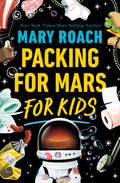
By Mary Roach. 2022
"What is it like to float weightlessly in the air? What happens if you vomit in your helmet during a…
spacewalk? How do astronauts go to the bathroom? Is it true that they don't shower? Can farts really be deadly in space? Best-selling Mary Roach has the answers. In this whip-smart, funny, and informative young readers adaptation of her best-selling Packing for Mars, Roach guides us through the irresistibly strange, frequently gross, and awe-inspiring realm of space travel and life without gravity. From flying on NASA's Weightless Wonder to eating space food, Packing for Mars for Kids is chock-full of first-hand experiences and thorough research. Roach has crafted an authoritative and accessible book that is perfectly pitched to inquiring middle grade readers." -- Provided by publisher
By Nicole Mortillaro. 2022
Are we alone in the cosmos? Could we one day live on a different planet? How is life formed? What…
other secrets does the universe hold? Through profiles of seven remarkable women scientists and their achievements in their respective fields, Searching Beyond the Stars takes us deep into space, looking at once to the distant past and the distant future to capture the awe and intrigue of some of the biggest questions we can possibly ask.Making connections across astronomy, chemistry, physics, history, and more, Nicole Mortillaro draws on her own experience as a woman in STEM to highlight the incredible odds each scientist faces while chasing new discoveries and the ways in which sexism and racism, among other barriers, still affect women scientists to this day. Sidebars filled with fascinating facts take readers behind the science and encourage them to delve deeper. Vibrant illustrations by Amanda Key showcase the wonder of space and the passion and eternal curiosity that drive each scientist in their work unfurling the mysteries of our universe.Scientists ProfiledKatherine Johnson, research mathematician and aerospace technologist at NASA. Helped get the first American astronauts into space and safely home again. Lived in Newport News, Virgina.Jill Tarter, radio astronomer and project scientist at NASA. Opened up possibilities for communicating with aliens. Lives in Berkeley, California.Sara Seager, astrophysicist and planetary scientist. Credited with laying the foundation for the field of exoplanet atmospheres and the search for life on exoplanets. Originally from Toronto, Ontario, Sara now lives in Massachusetts.Emily Lakdawalla, planetary scientist, journalist, speaker, and expert science communicator formerly of The Planetary Society. Lives in Los Angeles, California.Tanya Harrison, planetary scientist and geologist. Was on the science operations team for NASA’s Mars Reconnaissance Orbiter analyzing imaging from a geologist’s standpoint to see whether we might one day live on Mars. Director of Science Strategy at Planet Labs. Lives in Washington, D.C.Renée Hložek, astrophysicist and cosmologist. Her work is to imagine, dream, and calculate the mathematical equations that govern and predict the end of the universe. Originally from South Africa, Renée now lives in Toronto, Ontario.Ashley Walker, astrochemist, science communicator, and activist. Co-organizer of #BlackinChem, #BlackInAstro, and #BlackInPhysics to highlight and amplify the voices of Black researchers and scholars in these fields. Lives in Chicago, Illinois.*A Junior Library Guild Gold Standard Selection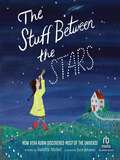
By Sandra Nickel. 2024
Before Vera Rubin discovered most of the universe, she was a girl who loved the night sky. She watched the…
Big Dipper circle the North Star. And when her eyelids grew heavy, she dreamed not about what she had seen, but about what she had not seen. She dreamed about the mysteries between the stars. As Vera grew older, she tried to uncover those mysteries. At her first conference, the male astronomers said her ideas were "outlandish." They said they were "ridiculous." Vera didn't like their harsh words, pushing her away. So she started studying faraway galaxies no one else was interested in. The youngest wheeled like pinwheels. The oldest spun with their arms closed tight. And every single one showed that between the stars, there is stuff we cannot see. Scientists before Vera had suspected this "dark matter" made up most of the universe. But no one had been able to show it was there. No one, until Vera. The Stuff Between the Stars tells Vera's incredible story, celebrates her brilliance, and shows how a girl's never-ending love for the night sky changed the way we see our universe today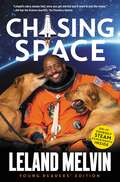
By Leland Melvin. 2017
A NASA astronaut shares his experiences that led him off the football field and into space. Discusses his time as…
an NFL football player and as an engineer, as well as the spacewalk training accident that left him with a partial hearing loss. For grades 5-8 and older readers. 2017.
By Megan Stine. 2013
In 1978, Sally Ride, a PhD candidate at Standford University, responded to a newspaper ad to join the US astronaut…
program. She was accepted and became the first American woman astronaut to fly in space! Among her other accomplishments, she played tennis like a professional, was an astrophysicist who helped develop a robotic arm for space shuttles, and later, through Sally Ride Science, worked to make science cool and accessible for girls. Sally Ride, who died on July 23, 2012, will continue to inspire young children.
By Anita Yasuda. 2015
Head outside and look up. What do you see? At night you might see stars, the moon, the Milky Way,…
and planets! During the day all these things will still be there, but they’ll be hidden by the bright light of the sun. Astronomy is the study of celestial objects and what’s beyond the nebulous boundaries of space. In Astronomy: Cool Women in Space, young readers will be inspired by stories of women who have made great strides in a field that takes courage, persistence, and creativity to pursue. Most people have heard of Carl Sagan and Stephen Hawking, but have you heard of Maria Mitchell or Caroline Herschel? For many decades, female astronomers have been defining the field by making discoveries that changed the human relationship with space. Astronomy: Cool Women in Space will introduce young readers to three women who are bringing the science of astronomy forward and inspiring the next generation of astronomers. The primary sources, essentials questions, and knowledge connections within Astronomy: Cool Women in Space encourage both boys and girls to explore our celestial world while being inspired to ask what role they might play in the next discovery.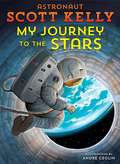
By Scott Kelly. 2017
In this debut autobiographical picture book, celebrated astronaut Scott Kelly describes how he -- and his twin brother -- grew…
up to achieve his dream of becoming an astronaut.As Scott Kelly prepares to blast back to Earth after a record-breaking year spent on the International Space Station, he thinks about what brought him here and what awaits him at home. Scott's partner-in-crime is his twin brother, Mark. They spent their childhood getting in and out of scrapes. They had a talent for finding trouble and taking risks, which turned out to be great training for the biggest risk of all -- space travel. Along the way to becoming astronauts, they learned to be peacemakers, to stay calm in the toughest of times, to support their family, to work hard and take small steps towards their goals. Scott learned that he needed people to believe in him, as his principal did, even though he was at first a terrible student who couldn't sit still. All of these skills served him well during his year on the ISS, where he and his crew ran 400 experiments and he himself became a test subject. The sacrifices Scott made, the dangers he faced and the sight of our beautiful planet from space made coming home even sweeter.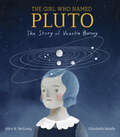
By Alice B. McGinty. 2019
An empowering, inspiring--and accessible!--nonfiction picture book about the eleven-year-old girl who actually named the newly discovered Pluto in 1930.When Venetia…
Burney's grandfather reads aloud from the newspaper about a new discovery--a "ninth major planet" that has yet to be named--her eleven-year-old mind starts whirring. She is studying the planets in school and loves Roman mythology. "It might be called Pluto," she says, thinking of the dark underworld. Grandfather loves the idea and contacts his friend at London's Royal Astronomical Society, who writes to scientists at the Lowell Observatory in Massachusetts, where Pluto was discovered. After a vote, the scientists agree unanimously: Pluto is the perfect name for the dark, cold planet. Here is a picture book perfect for STEM units and for all children--particularly girls--who have ever dreamed of becoming a scientist.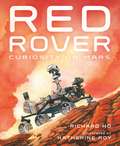
By Richard Ho. 2019
Red Rover is a gorgeously illustrated tale that explores the vast, inhospitable landscape of Mars and the adventures of the…
little rover that calls the planet its home.Mars has a visitor.It likes to roam...observe...measure...and collect.It explores the red landscape—crossing plains, climbing hills, and tracing the bottoms of craters—in search of waterand life.It is not the first to visit Mars.It will not be the last.But it might be...the most curious.Join Curiosity on its journey across the red planet in this innovative and dynamic nonfiction picture book by Richard Ho, illustrated by Sibert Honor winner Katherine Roy.This title has Common Core connections.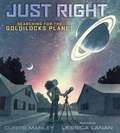
By Curtis Manley. 2019
Do you wonder if humansare the only beings who wonderif they are alone in the universe?Our sun is a star.In…
the night sky are all kinds of stars,and orbiting those starsare planets like the ones in our own solar system.Could those planets have lifelike we do on Earth?Planet Earth is not too big,not too small, not too hot,and not too cold. It’s just right.Our very own Goldilocks planet . . . .Follow a young girlas she explores these questionsin this gorgeous book about the wondrous searchfor another Goldilocks planet.